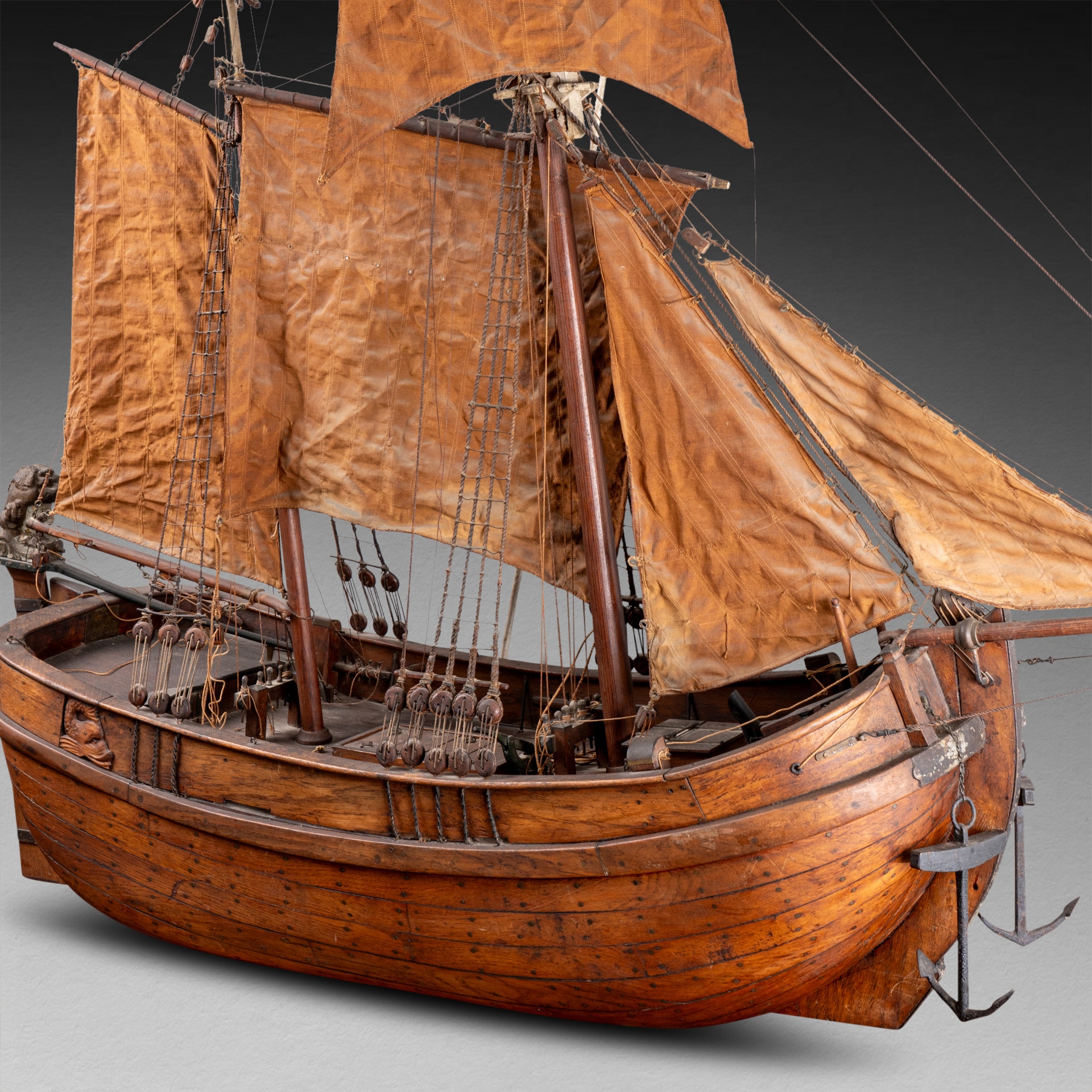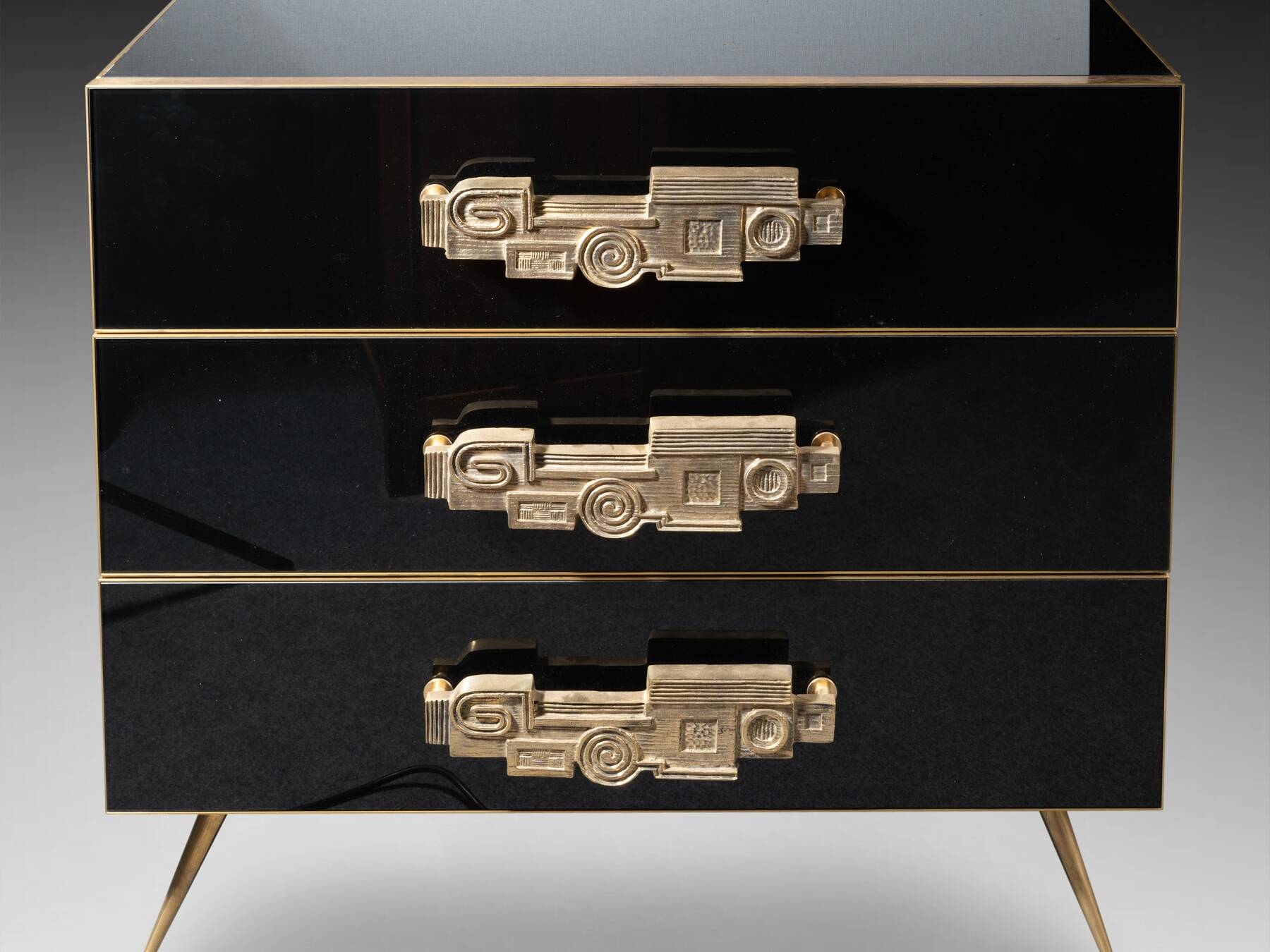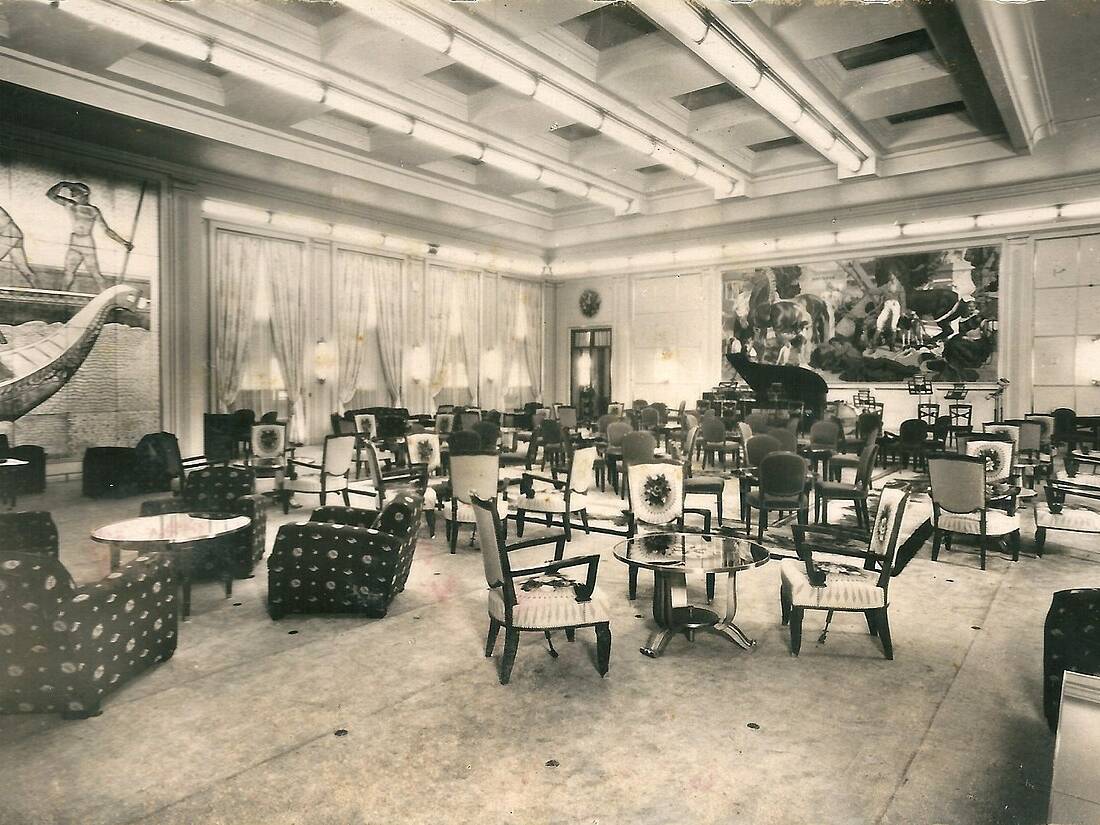Before crossing the seas and oceans, humanity first crossed very mysterious rivers. This is evidenced by these Egyptian models, in particular, which carry the deceased in exchange for payment to another world about which one knows nothing. Greek Antiquity is also familiar with these rivers crossed by silent boats. This is undoubtedly the very first and great journey into the unknown that humanity is considering. Because if humans easily move on foot, they have to wait for the first boats to put a wider world within their reach.
The great crossings
From Scandinavia to Polynesia, navigating peoples are still celebrated today for their maritime talents, and History puts into perspective the primacy of the Spanish discovery of the new world in 1492. However, this era of navigation which opened to the Renaissance breathes with it a maritime passion which sails even to the most beautiful aristocratic tables. The silver naves are therefore the first large-scale models. Used in the 15th and 16th centuries to decorate the table, they sometimes contain the sovereign’s cutlery or present rare spices which arrived in Europe at the end of a long maritime journey.

These very rare objects are extremely detailed: from the sails to the deck, everything is scrupulously represented. The crew is almost always shown busy. These naves are jewels of incredible luxury and as such remain a prerogative of museums. For collectors, careful copies in bronze or silver plated made in the 19th or 20th century are intended.
Arsenal models
These models are the most sought after by collectors. Of one to two meters long, they are the work tool used by carpenters and all trades involved in the construction of a ship. As a result, they are of formidable precision and true historical testimonies of what the boats of the Ancien Régime in particular may have been.
Some are only « lined » (covered with their hull) on one side only, the other side revealing the different membranes and the interior organization of the ship.
These arsenal models only appeared in the middle of the 17th century. They respond to an intense maritime race and the rivalry of the two great powers of the time, the French Navy and the English Navy. The two compete for domination around the world in technological innovations capable of taking precedence over their adversaries in terms of firepower, speed and storage capacity. The investments to achieve supremacy of the seas were such that a body of craftsmen soon specialized in the creation of models which should make it possible to anticipate the strengths and weaknesses of future boats. Thus, construction is initiated only when the model responds favorably to the reproduction of real conditions. The lesson of the Vasa, a Swedish ship inaugurated with great fanfare in 1628, had been learned. The superb three-masted ship built for King Gustav II Adolf of Sweden had not sailed a nautical mile when it sank in a depth of thirty meters the same day.
The English were the first to form an Admiralty Models in 1660 under the reign of Charles II (1630 – 1685), and were quickly imitated by Colbert (1619 – 1683) who entrusted the making of models to architects and marine carpenters and their artisans.

In addition to their essential technical precision, these models are already adorned with the ornaments of the finished ship and make superb decorative pieces. It is moreover the quantity of ornaments and painted or gilded refinements which will indicate to the collector the first vocation of these models. When those all painted and gilded were expensive toys offered to the Sons of France, and in the 19th century to very privileged young boys, the more arid models were those intended for construction sites and, from the 18th century, for the training of military Marine officers.
Sailor models
Another category of models is appreciated by collectors, those more rustic and more poetic models made by the sailors themselves. When time passed slowly on board and boredom set in, some sailors kept themselves busy by making models with the means at hand. Often made of wood, they are sometimes painted, but their length is always less than 80 cm to fit into the sailor’s personal storage once work resumes. Often these models are equipped with ropes, pulleys and all sorts of familiar details, but are rarely veiled. Either the sails have disappeared or they were never set in.

While some of these creations were brought ashore and kept within families, many of them were offered to port churches. They then became ex-voto, a grateful offering of the sailor who prayed to return to land safe and sound. These models are still visible in coastal churches, suspended from the ceilings of buildings like flying ships.
Pontoon Models
This curious name christens the models made by Napoleonic prisoners on the pontoons of English ships. If their proportions are often more modest than those of arsenal models, their refinement is certainly no less. These models are regularly the result of teamwork where each prisoner had his role and his specialty: one cut the wood, the other collected bones in the kitchen, the other assembled, etc. The result is often a beautiful boat with a bone-plated hull, rigging made of wood, ropes and whalebone. Once on land, these models were sold and the sum obtained distributed among the prisoners to improve their daily lives.

As for the ivory models, on a very small scale, without lacking in precision, they are the work of tabletiers (ivory and bones craftsmen), particularly those from the Dieppe workshops.
Marielle Brie de Lagerac
Art historian for the art market and cultural media.
Author of the blog Objets d’Art et d’Histoire
Autres ressources et documentations
28 June 2025
Plaster Sculptures, Plaster Casts
For a long time, plaster casts suffered from a poor reputation. Often regarded as crude replicas, and sometimes even dismissed as inexpensive imitations, they nonetheless had…
17 April 2025
The Middle-Ages Furniture
Rare and highly sought-after, Middle-Ages furniture is making a strong comeback. An overview of this market, where enlisting the guidance of a professional is strongly advisable.
18 March 2025
Murano Glass Furniture
Since the beginning of the 20th century, Murano glassmakers have been exploring new horizons. After classic lighting and decorative art, Murano glass is now used to adorn…
16 December 2024
A bronze triton after the sculptures of François Girardon (1628 – 1715) in Versailles
This fountain element is all the more admirable as it is sculpted after the masterpieces of the Pyramid Basin, on the parterre of the North Wing of the Versailles gardens.
18 November 2024
Tyco Bookcase, by Manfredo Massironi, for Nikol International
A pure creation of optical art research in the 1960s, the Tyco library shelf designed by Manfredo Massironi invites the viewer to bring the work of art to life on a daily basis.
3 August 2024
The Ocean Liner Style
In the 20th century, the immense ocean liners connecting the Old Continent and the New World were ambassadors of tastes and innovations on both sides of the Atlantic.






